In June 2016, DC Comics kicked off the start of its Rebirth initiative. After a wave of criticism surrounding the way they have treated their characters’ rich histories since 2011’s New 52 relaunch, DC has decided to rebrand. They hope that by restoring their characters’ pasts, they will restore readers’ faith in them as well. Do they succeed? That’s what the Comics Beat managing editor Alex Lu, entertainment editor Kyle Pinion, and contributor Louie Hlad are here to discuss. Book by book. Panel by panel.
THIS WEEK: Alex reviews the culmination of Clayface’s arc in Detective Comics #973 and looks at Nightwing: The New Order, a book dogged by criticism at its announcement.
Note: the reviews below contain **spoilers**. If you want a quick, spoiler-free buy/pass recommendation on the comics in question, check out the bottom of the article for our final verdict.
 Detective Comics #973
Detective Comics #973
Writer: James Tynion IV
Artist: Jesus Merino
Colorist: Jason Wright
Letterer: Sal Cipriano
There’s a quiet beauty to this run of Detective Comics. Over the last two years, writer James Tynion IV, along with artists including Eddy Barrows and Jesus Merino, have taken their time to turn the idea of Batman into an empire, only to burn it all down in one fell swoop. Unlike other books in DC’s current lineup that have a long-term story plan, Detective Comics has benefited from a clarity of vision– it never feels like the next story arc comes out of the blue– obstacles and adversaries are seeded far in advance like time bombs, waiting for their moment to send our heroes running for the hills.
Poetically, this arc, is called “Fall of the Batmen,” mirroring the “Rise of the Batmen” arc that kicked off this series at the start of the Rebirth initiative. That first storyline centered around Batman deciding to look outside himself for the solution to his endless war on crime. It took the batfamily, who has most often been seen in fits and spurts individually, and brought them all together to fight a coordinated battle against Gotham’s greatest threats. Ultimately, we’d see the Dark Knight joined by Batwoman, Red Robin, Orphan, Spoiler, Azrael, and even Clayface. And they were unstoppable.
But just as soon as their empire came together, the cracks in the foundations started to show. Tim Drake “died.” Batwing was brought in to replace him, but Tim’s death ultimately soured Spoiler’s, or Stephanie Brown’s, outlook on the Bat-family and on vigilantism in general. The remaining members of the family were put through their paces, coming into contact with threats like the Monster Men and The Victim Syndicate that forced them to examine their own allegiances and the overall effectiveness of their endeavors.
It’s not easy to manage a book with an ensemble of lead characters. A creative team has to juggle providing character growth for all members of the cast on a regular basis without leaving fans of any one character feeling like they spent money to see their favorites make a cameo in somebody else’s story. Detective, through and through, has used a simple but effective solution to solve this problem: every arc’s core antagonist forces one of our protagonists to confront their demons, effectively making them the lead for that arc. Batwoman had to face her father, Colonel Jacob Kane, who was heading a secret military group called The Colony. Orphan had to face her mother, Lady Shiva. Tim Drake faced a future version of himself. Through and through these characters have taken resonant personal journeys over the course of this series, bolstered and improved by the support of one another.
And thus, we come to the tragedy of Basil Karlo.
For the majority of his existence, Clayface has been portrayed almost solely as a villain. Yet, when we first meet him in this run of Detective Comics, we see the softer side of someone who’s been branded as a monster. Before he was Clayface, Basil was a handsome actor, with eyes that could look right into your soul. Batwoman and Batman find him in a movie theater, watching himself on screen. Forlorn. Lost. And in those lost eyes they see the possibility for change and redemption. They offer to help find him a cure in exchange for joining their team. And he does so.
At first, he’s reluctant, but as time goes on he starts to find his place in the ranks of the Batfamily. He takes a particular liking to the quiet Orphan, as they’re both characters who openly admit that they’re broken. But they’re trying. And together, they improve. Cassandra Cain starts off barely speaking, but she begins to run full verses of Shakespeare with Basil, who has the chance to finally be himself thanks to a bracelet that keeps his mutation at bay. He even has the full-on possibility for a cure, thanks to Dr. Victoria October, one of the other great additions to the canon that’s come out of this series. Basil’s climb from hopeless to hopeful is a long one, but it’s one that I’ve loved watching because it’s treated with such empathy. Basil’s journey takes its sweet time to develop, showcasing that his quest to become a better and healed person is never easy. It’s a struggle, but everything worth doing in life is.
And the emphasis is always on Basil becoming a better person rather than a good one. Detective Comics never wipes away his villainous past throughout its run. It even introduces Glory Griffin, aka Mudface, to the DC universe in order to directly challenge Basil’s assertion that he can be a good guy. Glory was once an actor, like Basil, but after he became Clayface, Glory ended up becoming a victim of his. She ended up developing a mutation much like the one that turned him into malleable clay, except she doesn’t even have the ability to control her growths. Their relationship has been a fascinating one to watch because it reflects one of the hardest lessons anyone can learn: just because you feel bad about the choices you’ve made and just because you’ve done everything you can to rectify the damage you’ve done, doesn’t mean you’re entitled to forgiveness.
Everyone in Detective Comics has demons. They’re all heroes, but they’re so visibly imperfect that it’s hard to watch at times– though it’s also impossible to look away. And finally, all their demons have flocked together to create a perfect storm of horrors as the Victim Syndicate reasserts itself on Gotham. Tim’s militant instincts and fear of the future lead to Batwoman getting a gun from her father that can theoretically stop Clayface, who’s been pushed out of control by the Syndicate. Batwing and Azrael can’t stop him. No one can.
For a moment, Cassandra manages to break through to Karlo, and she recites a bit of Shakespeare’s The Tempest to him. The lines she chooses come from the epilogue, as the magician Prospero swears away his magic and begs the audience for their applause, which can set him free from the island he’s been trapped on for twelve years. In the context of Detective, Karlo’s journey is reflected in Prospero’s. He’s been cursed for so long and ostracized by everyone in the world because of that curse. The only thing that can set him free is the support of his audience. Of his friends and family. Cassandra believes Karlo can be better. They’ll get better together, no matter how hard he thinks the journey might be.
Of course, the epilogue to The Tempest was also Shakespeare’s goodbye to the stage. Prospero’s final plea was Shakespeare’s final bow. And indeed, this seems to be Karlo’s final bow as well. For at his moment of greatest need, Batwoman doesn’t applaud. Her military background kicks in as she puts the citizens of Gotham before herself. She puts the many before the few. She pulls out her secret weapon. And takes the shot.
And with that, a family is broken. An empire comes to an end. And what a tragic one it is.
Verdict: Buy
 Nightwing: The New Order #6
Nightwing: The New Order #6
Writer: Kyle Higgins
Artist: Trevor McCarthy
Colorist: Dean White
Letterer: Clayton Cowles
Nightwing: The New Order started off on the backfoot. When the series was announced, Marvel was in the midst of Secret Empire, an event where Captain America was re-envisioned as a secret agent of HYDRA. Fans were reviled by the idea of one of their favorite heroes being transformed into a Nazi analogue in an era when real Nazis are burning torches in city streets. And in light of that, Nightwing: The New Order seemed destined to face a similar backlash. Initially it did, but as the series started to came out it revealed itself to be something quite different than what it was initially perceived as.
The primary difference between Nightwing: The New Order and Secret Empire is that never once is the authoritarian version of Dick Grayson presented as a hero. He doesn’t act duplicitously to convince other heroes what he’s doing is right. We all know he’s a monster and the story takes pains to highlight that. One of the first things that Dick’s son, the story’s narrator, says is that “eventually, I learned how even good people can come to believe in really terrible things.” Nightwing: The New Order is not about a hero’s fall, but rather about a former hero’s redemption. We’re not forced to sit with a mind-controlled version of a character that believes his totalitarian views are right, but rather with a character who’s experienced a trauma that forced him down a road with dark consequences.
This idea of consequence is important when it comes to telling a story like this because it’s important not to put ideas of totalitarianism on level ground with the ideas that shape a free and democratic society. When you see a character like Captain America spout an actively protectionist and martial rhetoric without any sense of doubt or recourse, it makes it seem like the character is trying to sell that doctrine to you. In that series, you never see Steve challenge his own ideas in a tangible way. Hell, he literally has to fight another version of himself in order to ultimately have his platform taken from him. And even then, his ideas stick around. Beaten down but not necessarily proven wrong.
Meanwhile, Nightwing: The New Order has been interesting to watch because of the internal struggle Dick has faced over the course of this series. After a major superhero war broke out in Metropolis, Dick used a weapon to take away 90% of the world’s superpowers. Since then, he’s become the figurehead and leader of a group of Crusaders who monitor the remaining 10% of superpowered individuals, suppressing the abilities of those they can while freezing those they can’t. The policy has arguably saved countless lives that could have been lost in another Metropolis-esque event, but it’s separated families and literally put peoples’ lives on ice. And Dick is finally forced to confront that when he finds out that his son, Jake, has powers too.
Watching Dick struggle to reconcile the events of his past, where Superman ended up killing the Batman of his world due to an incident with Black Kryptonite, with his son’s future has been fascinating precisely because throughout this series, you really see him forced to constantly choose between bad and worse choices. It’s a real struggle for Dick to be confronted by people he once called allies after he is forced to go on the run with his son. You get to dive in deep into how his relationship with Starfire was slowly torn apart emotionally despite her logically understanding her ex’s position. And every time you think Dick has committed to a choice to either join the rebellion against his own policies or reassert them, putting the law above even his own family, he flip flops. It’s an interesting look at tension between the theory of law and the practical enforcement of it.
That said, by the time this, the series’ final issue, rolls around, the battle lines are resolved pretty cleanly– perhaps too cleanly for my liking. Towards the middle of this series, The New Order introduced an alternate version of Lex Luthor that’s been working with Superman and other rebels in Metropolis to search for a cure that will give people their powers back. This premise immediately rang false to me because I don’t think it makes a ton of sense for Luthor, ever the humanist, to want to create a superpowered world again after he and Superman have finally been made equals. And yet, he does, and now we find out why. He’s planted a bomb underneath the rebel facility, where all the rebels and all the lead Crusaders have gathered to face off, in an attempt to give the entire world powers. So of course, both sides of this fight put aside their differences to defuse the weapon. Thus, given the questionable logic behind his presence to begin with, it seems like Luthor was a square peg forced into this round hole for the sake of bringing everyone together. Which doesn’t make the conclusion bad….just not quite as interesting as it might have otherwise been.
That said, it’s easy to recommend Nightwing: The New Order regardless. It’s a beautiful book. Trevor McCarthy and Dean White outdo themselves with every issue. Their futuristic redesigns for characters like the Blue Lantern Lois Lane and Starfire are unquestionably badass. White’s colors pop and shine with shades of pink and cyan, giving the book a decidedly dystopian Blade Runner feel. And while the plot gets a little mushy around the edges towards the end, the overall trajectory of the book is strongly positive, far exceeding the tepid hopes engendered by its premise.
Verdict: Buy the trade (god I love mini-series for this reason)
 Round-Up
Round-Up
- Doom Patrol #10 continues to be weird as hell. Terry None is confirmed to be the villain of Mr. Nobody and it looks like she and Casey are….having a baby? The Disappointment does not disappoint the reader and we finally get some resolution to Lucius’ plotline…quickly followed by his whole family being scooped off by some bat who needs Lucius to reclaim his rightful kingdom. Man oh man if this book weren’t so ardently confident in its weirdness, I would say it’s FAR off the rails. But it is. So I can’t do anything but laugh at the frog with a mustache, all the victimized S#!+ eaters, and Flex Mentallo’s obsession with MAXIMUM PHYSICAL HEALTH.
- Doomsday Clock #3…I have so many questions. And a lot of them have to do with the logic of the story. If the Comedian was teleported to Earth Prime before he died, does that mean they never found a body in the Watchmen universe? That doesn’t seem like a detail Ozymandias or even Rorschach would miss. And if Dr. Manhattan were responsible for saving Blake, then he would have also known about Ozymandias’ plot from the get go, right? Puppet who can see the strings though, yada yada…anyways, my point is, something seems awry about all this. I also don’t buy that a Bruce Wayne who was literally just turned into a portal for an otherworldly demon from outside time because he was infused with some secret metals would not believe Rorschach’s journal. I hope there’s stuff in future chapters to clarify these moments, or else I’m going to have many words to say. BUT. That all said. I really still do love a lot of the craft that Gary Frank is putting into the story. It’s so, so, so beautiful and makes me want to pull out my Watchmen trade to look for visual parallels, which this series is certainly full of already.
Miss any of our earlier reviews? Check out our full archive!


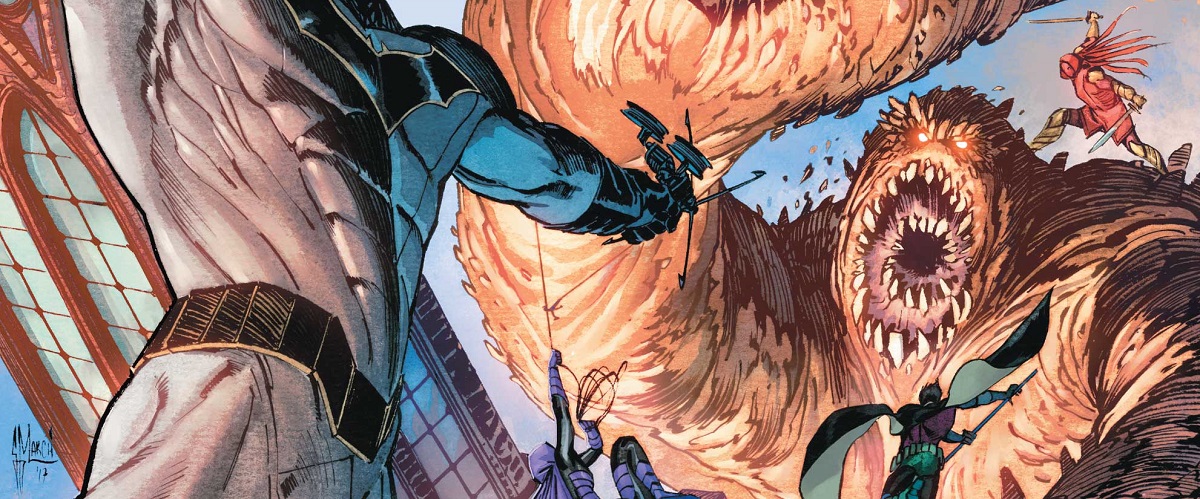
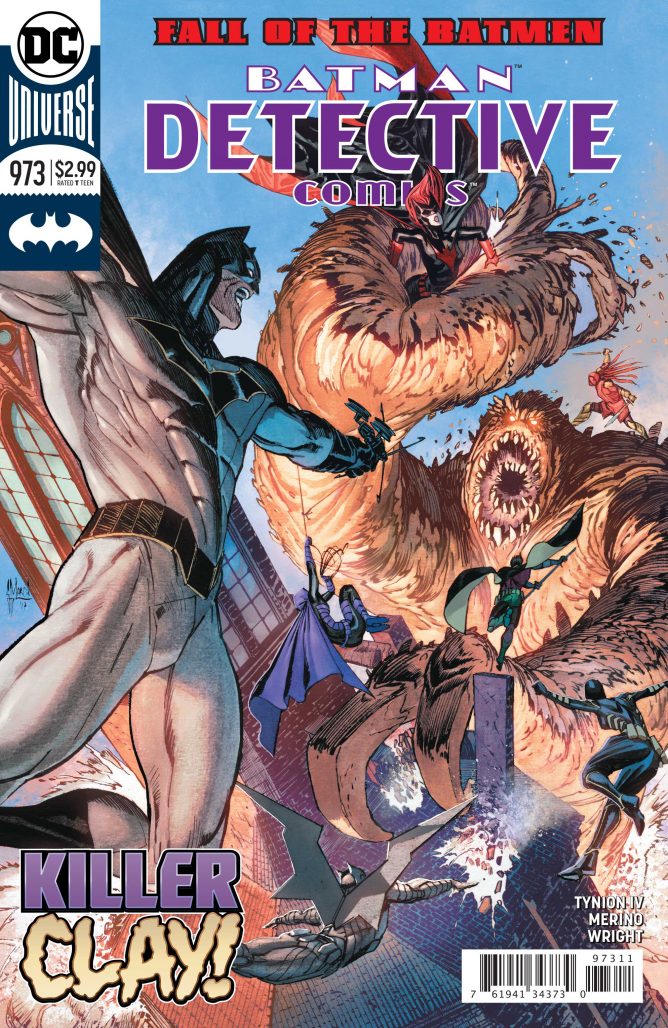
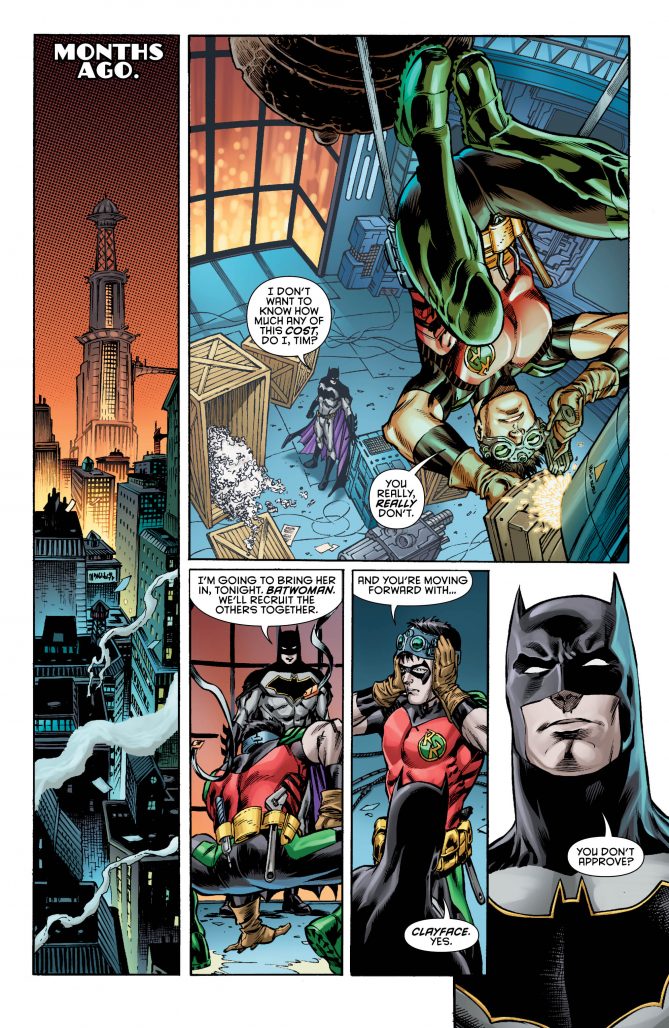
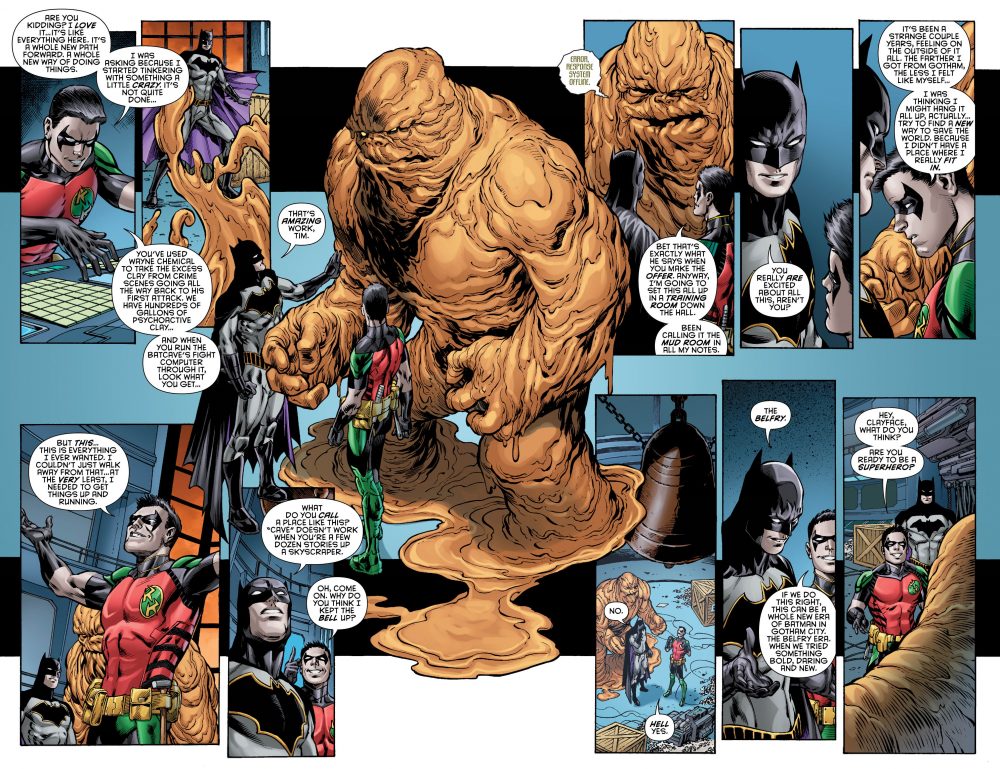
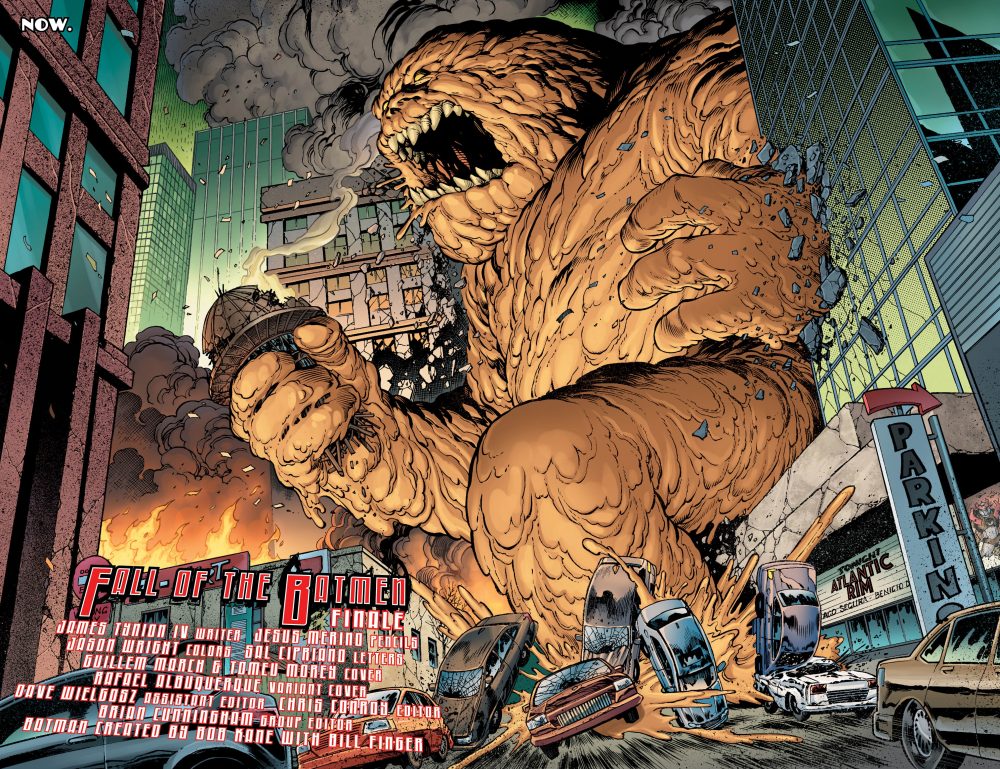
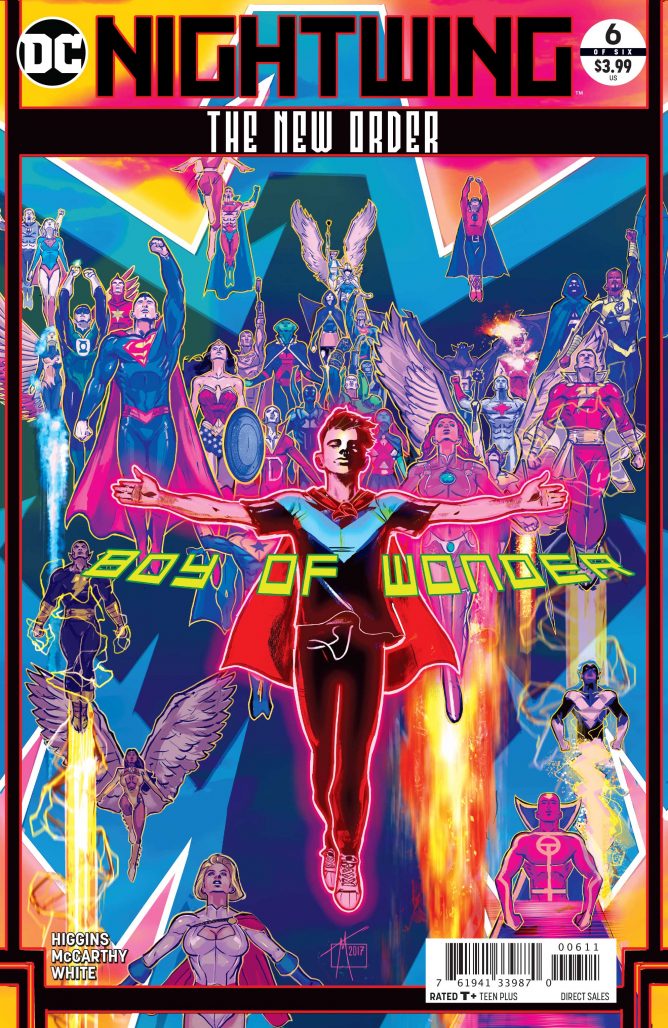
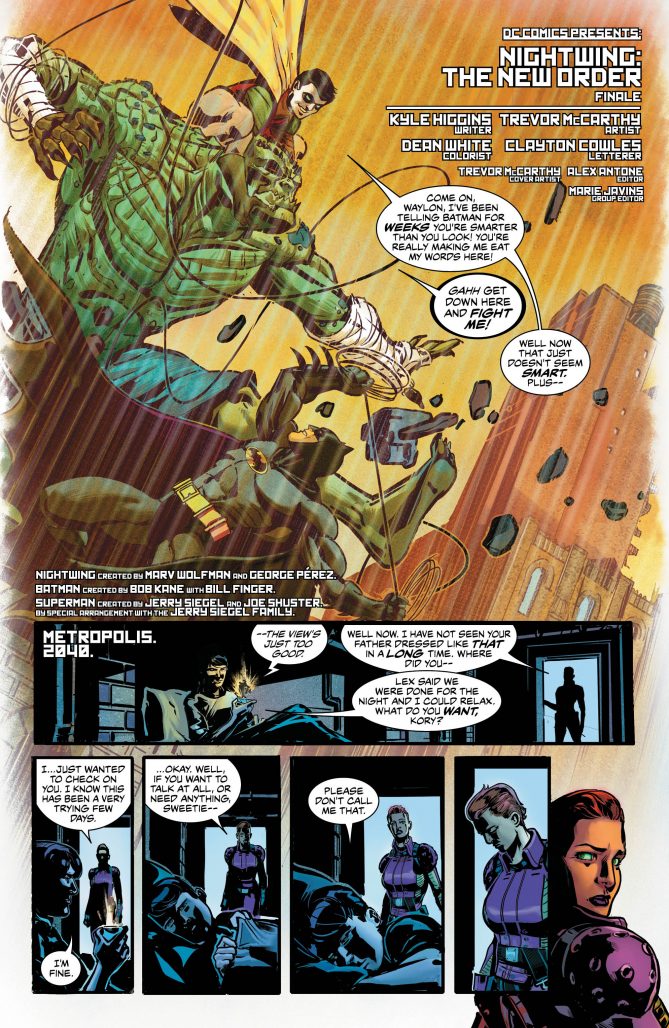
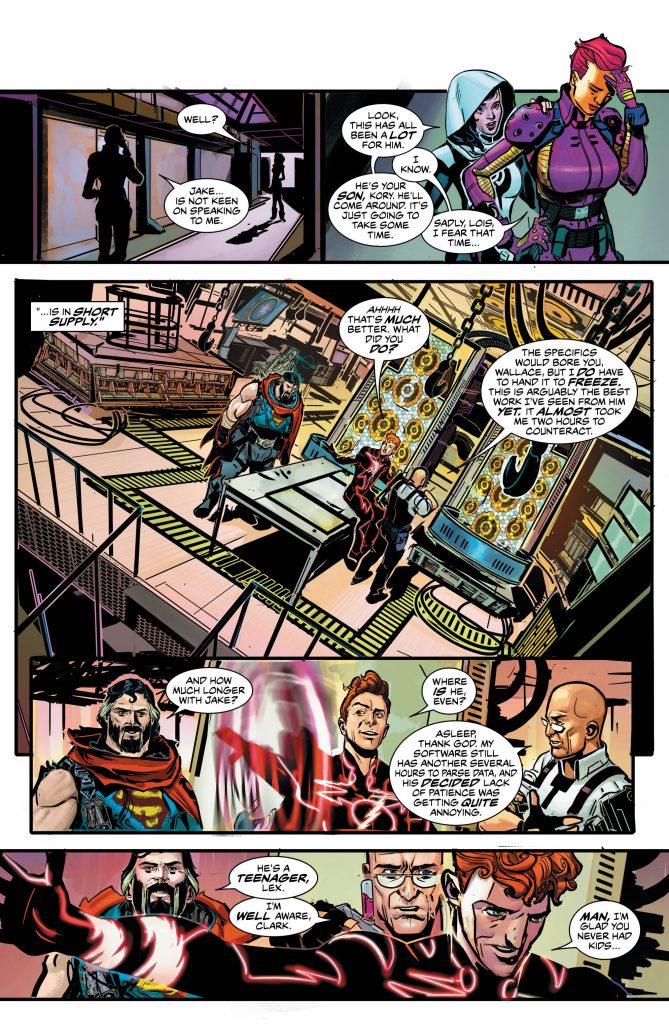
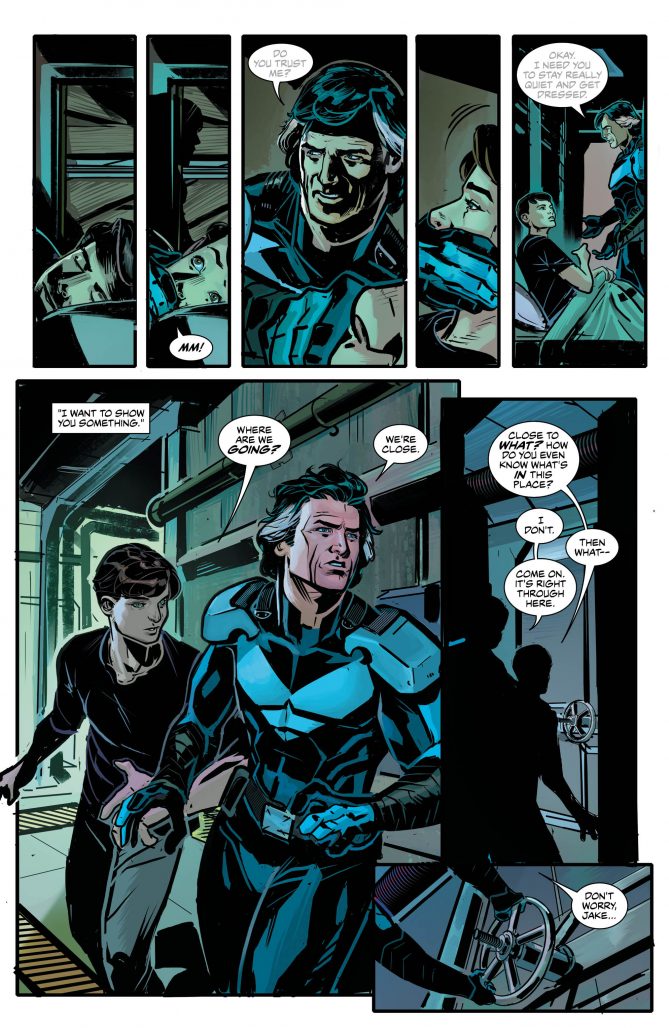
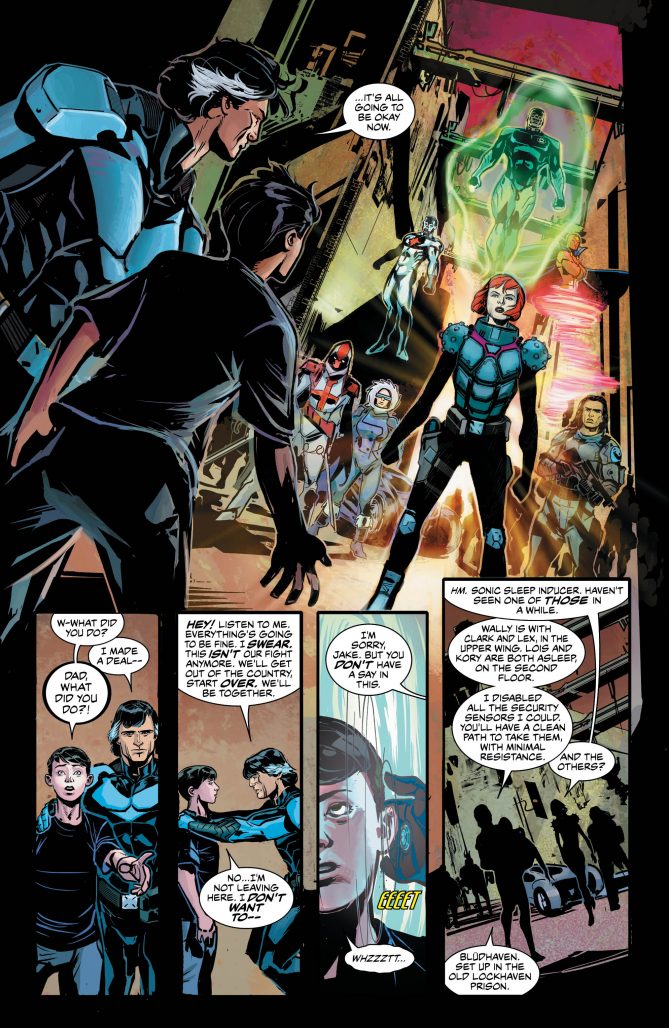
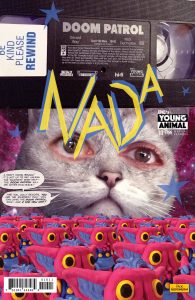


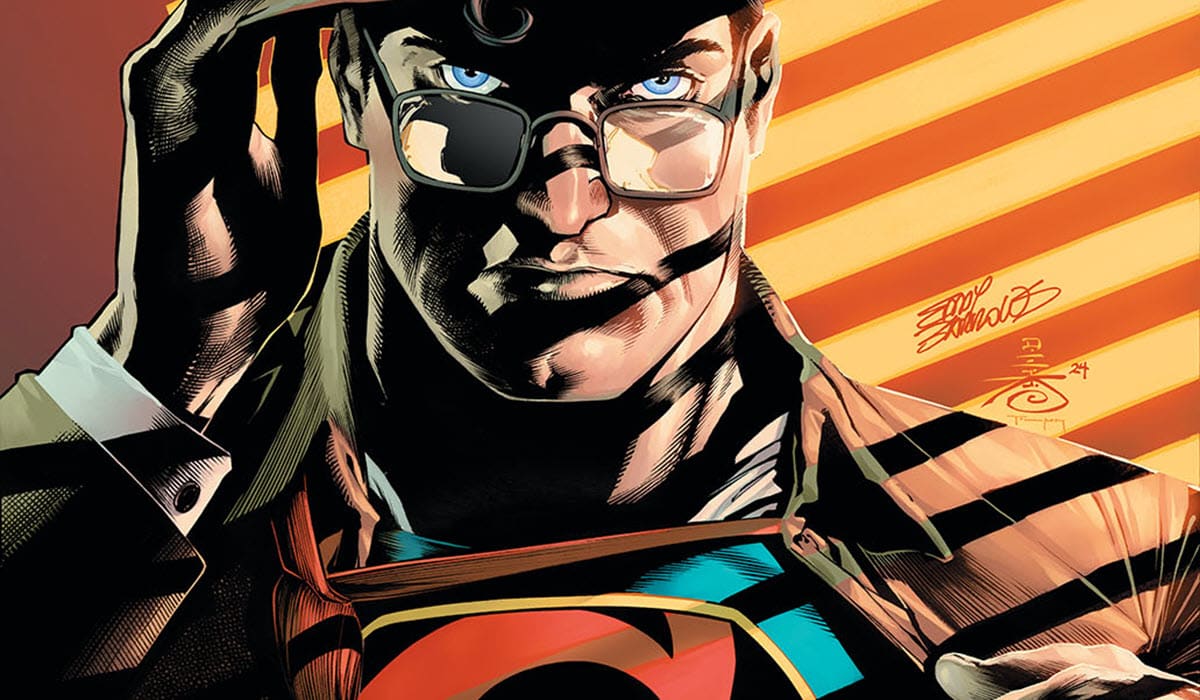



OH, wow. I”ve been reading Detective in trade and can’t wait to read this story. I”m sad right now. :(
Comments are closed.